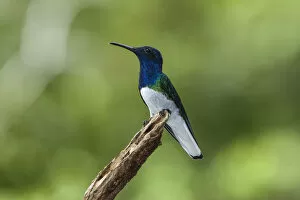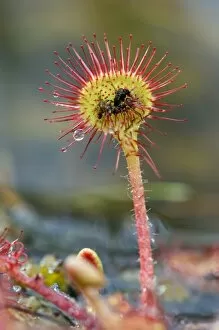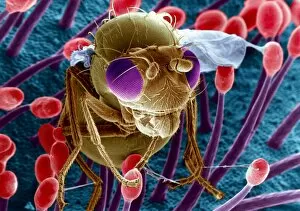Insect Eating Collection
"Insect Eating: A Fascinating World of Carnivorous Plants and Hungry Birds" Picture No
All Professionally Made to Order for Quick Shipping
"Insect Eating: A Fascinating World of Carnivorous Plants and Hungry Birds" Picture No. 11071312 captures a male White-necked Jacobin perched on a branch in Panama, showcasing the intricate relationship between birds and insects. Insects play a vital role in the diet of many bird species, providing them with essential nutrients for survival. Meanwhile, Picture No. 11071311 showcases the Red Sundew in Darling, South Africa. This carnivorous plant lures unsuspecting insects with its glistening red tentacles covered in sticky secretions. Once trapped, these unfortunate creatures become nourishment for the sundew as it absorbs their nutrients. In Picture No. 11071310 and Picture No. 11071309, we witness the iconic Venus flytrap (Dionaea muscipula) at work – an extraordinary plant that snaps shut when triggered by an insect's touch or movement. Its specialized leaves then digest the captured prey to extract valuable sustenance. The Alpine Butterwort (Pinguicula alpina), depicted here as well, possesses tiny glands on its leaves that secrete digestive enzymes to break down insects caught within its grasp (Picture No. 11071308). These plants have adapted to thrive in nutrient-poor environments by supplementing their diet through insect consumption. Moving beyond plants' predatory tendencies, Drosera rotundifolia is showcased digesting an insect in Picture No. 11071307 – another example of nature's incredible adaptability and resourcefulness. Lastly, Picture No. 11071306 displays a fly caught in sundew under scanning electron microscopy (SEM), revealing intricate details of this captivating interaction between predator and prey. These images remind us of the diverse strategies employed by both plants and animals to secure their sustenance from unsuspecting insects - truly highlighting nature's remarkable ingenuity.












